Arlington National Cemetery Facts- 19 Interesting Facts About Arlington National Cemetery
Purchases made through links earn us a small commission, at no extra cost to you.
As the most prestigious military cemetery in the United States, Arlington National Cemetery is a treasure trove of history. Some of the nation’s most harrowing and heroic war stories are reflected in its grounds, but there are some interesting things to know about the cemetery itself.
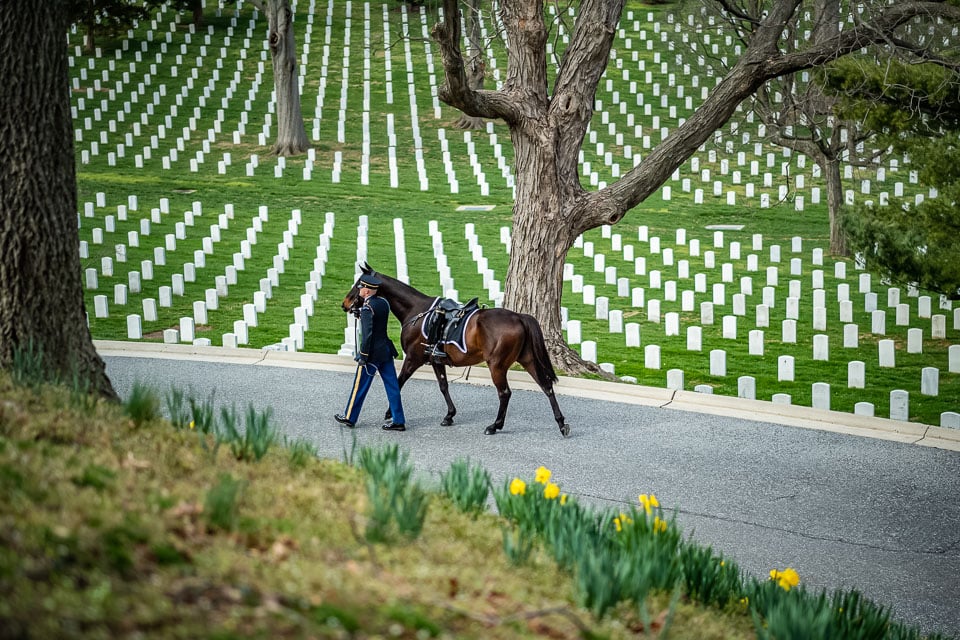
Interesting Facts About Arlington National Cemetery
Here is a collection of interesting facts about Arlington National Cemetery in Virginia.
Arlington National Cemetery has over 400,000 burials
There are over 400,000 people buried in Arlington National Cemetery. The burials include veterans, service members who died while on active duty, and their dependents.
Of all the national cemeteries in the United States, Arlington has the second most burials, behind Calverton National Cemetery on Long Island.
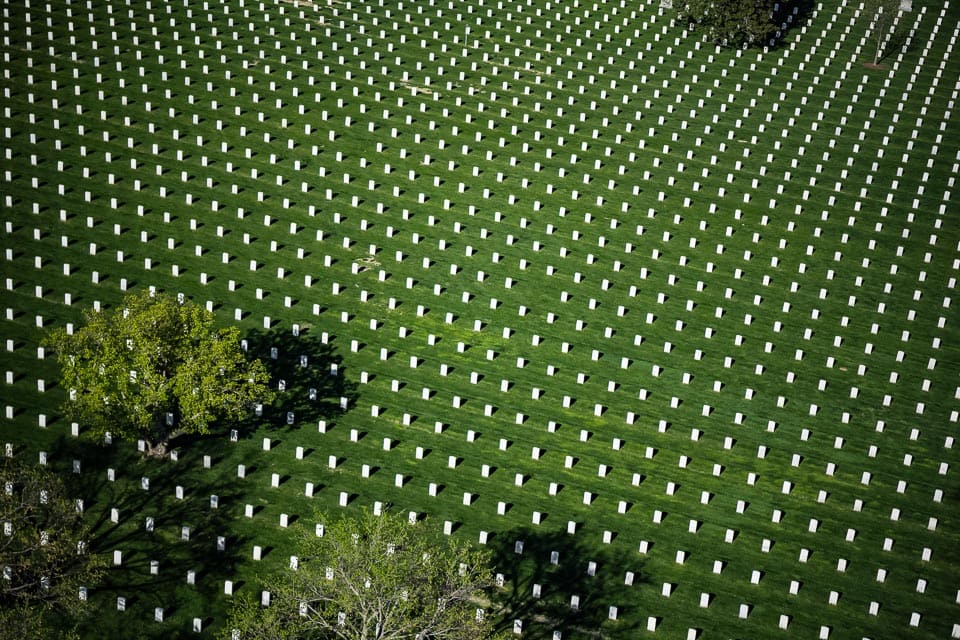
Arlington is the only national cemetery to hold service members from every war in U.S. history
Among the Arlington National Cemetery burials are veterans who fought in every American conflict since the Revolutionary War.
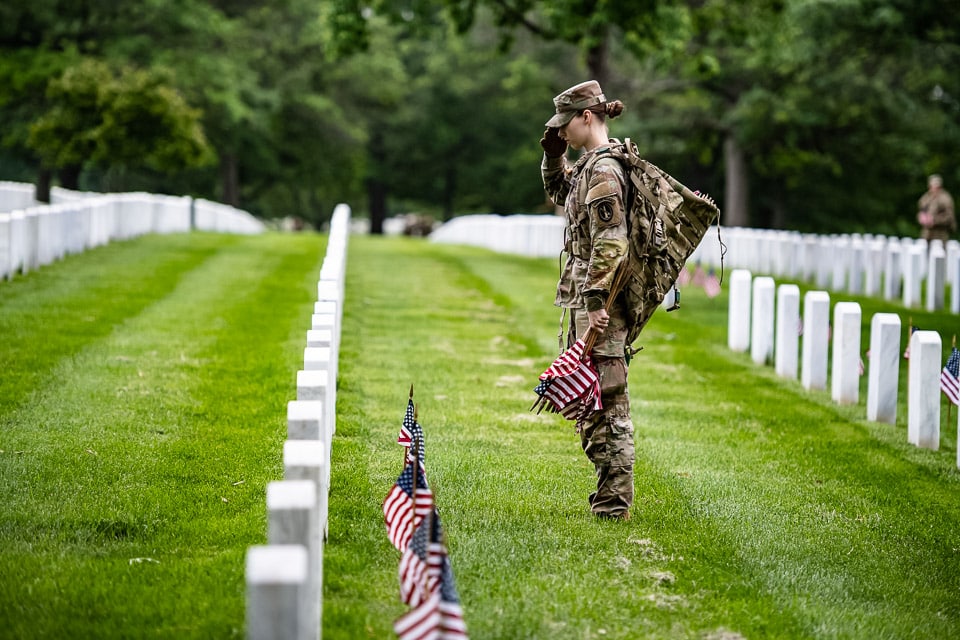
Arlington National Cemetery was originally an estate belonging to George Washington’s step grandson
Before Arlington was a cemetery it was part of the Arlington Estate, a working plantation owned by George Washington’s step grandson, George Washington Parke Custis.
Custis intended the estate to be a living memorial to George Washington, the United State’s first president. Custis had Arlington House, a Greek Revival-style mansion, built on the property as a place to display his collection of George Washington heirlooms and memorabilia.
Arlington Estate was abandoned by the family at the start of the Civil War. Soon after it was seized by the U.S. Army for its strategic value in defending Washington D.C.
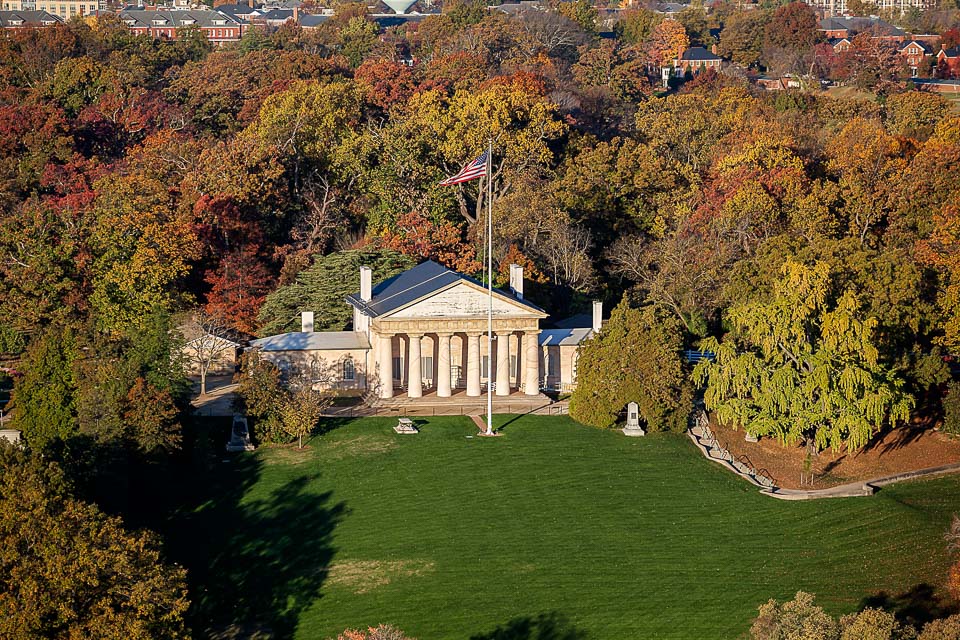
During the Civil War Arlington National Cemetery was home to a community of freed slaves
Before the Army created a military cemetery on the Arlington Estate, part of the property was home to a Freedman’s Village.
The village was established in 1863 by the federal government to be a temporary settlement for formerly enslaved people, but the community thrived and remained until 1900. The village was located in what are now Sections 3, 4, 8, 18, and 20.
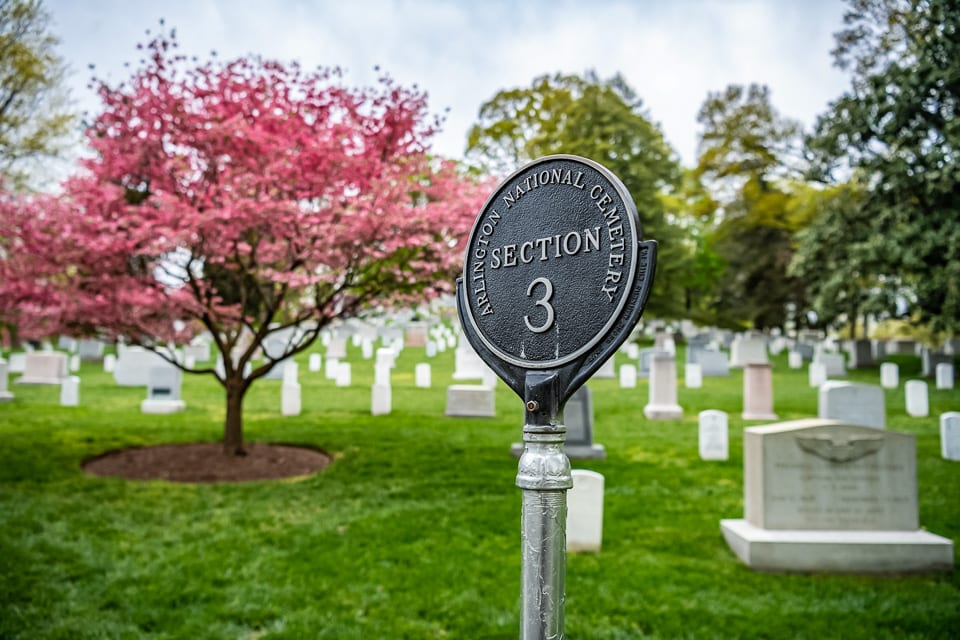
The oldest grave in Arlington National Cemetery dates back to 1864
Private William Christman was the first soldier buried at Arlington, making his grave from 1864 the oldest in the cemetery.
Christman’s burial came after the Quartermaster General of the U.S. Army, who was responsible for the burial of soldiers, ordered Arlington Estate to be used as a cemetery.
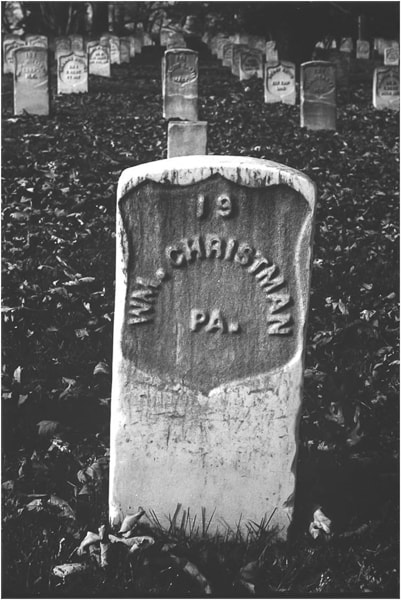
Arlington officially became a national cemetery in 1864
By order of Secretary of War Edwin Stanton, Arlington became a national cemetery on June 15, 1864. The original cemetery was just 200 acres.
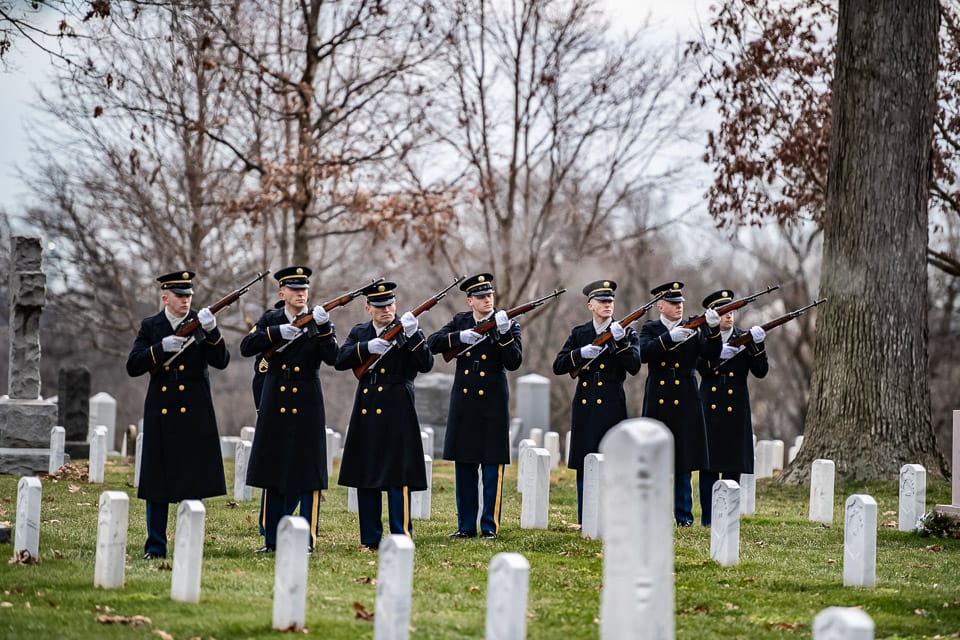
Arlington used to be a segregated cemetery
Like all national cemeteries at the time, Arlington was segregated by race and rank. This changed in 1948 when President Truman desegregated the military.
Interestingly, before receiving national cemetery status Arlington was racially integrated.
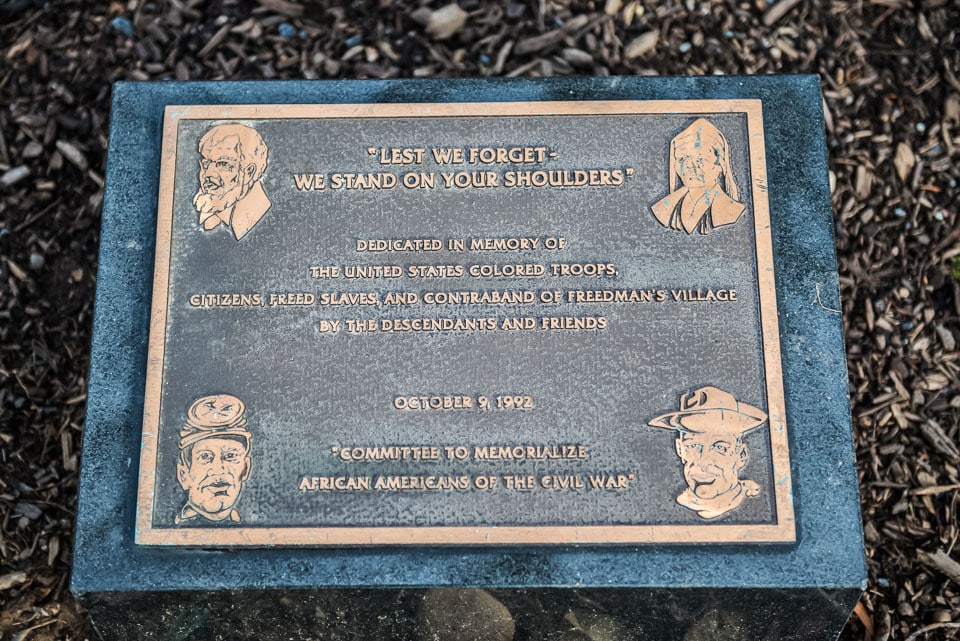
Memorial Day originated at Arlington National Cemetery
In 1868, the first official Memorial Day ceremony (then called Decoration Day) was held at Arlington National Cemetery. The ceremony took place at the site of the James Tanner Amphitheater, which was built five years after the original event.
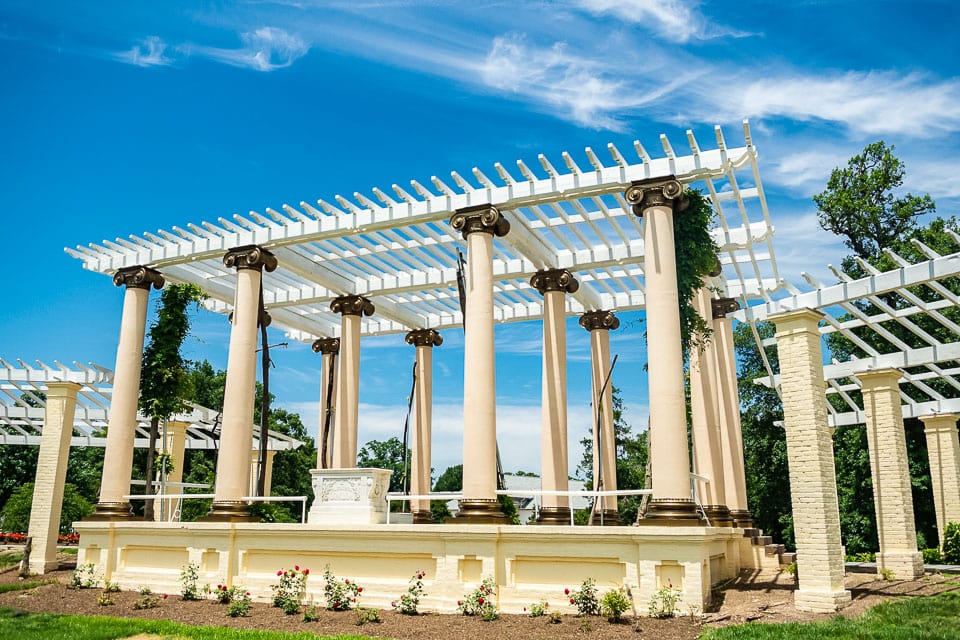
A time capsule was placed under the cornerstone of the Memorial Amphitheater
In 1915 a copper memorabilia box was placed below the cornerstone of the Memorial Amphitheater.
The box was removed in 2020 as part of the centennial commemoration of the amphitheater’s dedication. A few items inside the time capsule were a signed photograph of President Woodrow Wilson, maps and plans of Washington D.C., uncirculated stamps with images of George Washington and Benjamin Franklin, and an American flag with 46 stars (even though there were 48 states in 1915).
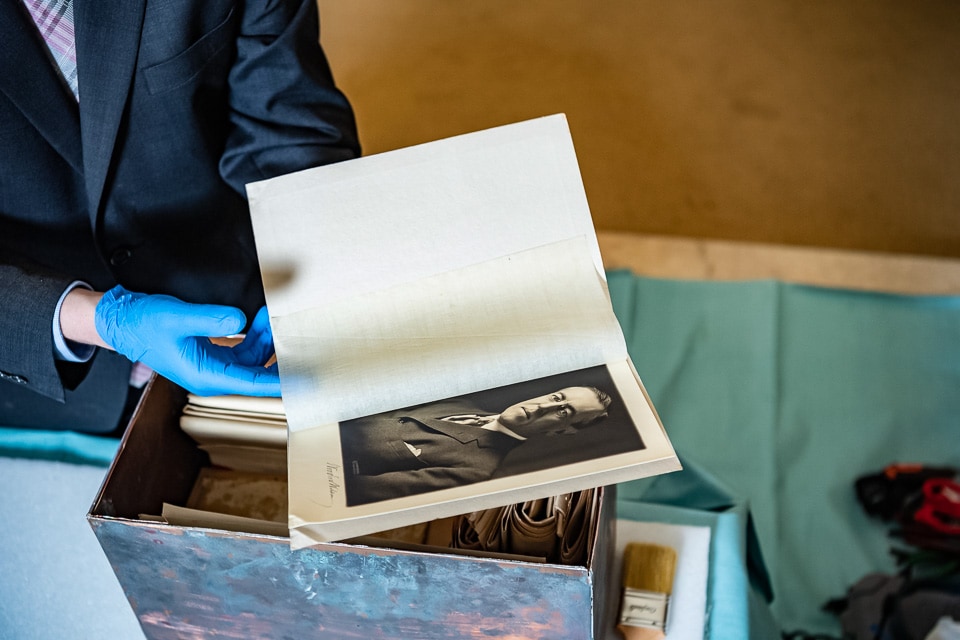
Arlington National Cemetery is home to the only national memorial honoring a Confederate leader
In 1925 Arlington House was dedicated as a memorial to Confederate general Robert E. Lee. In 1955 it was recognized as a national memorial, becoming the only national memorial to honor someone who fought a war against the United States.
Although Lee is a controversial figure, the legislation that created the memorial focuses on his role in promoting reunion after the Civil War.
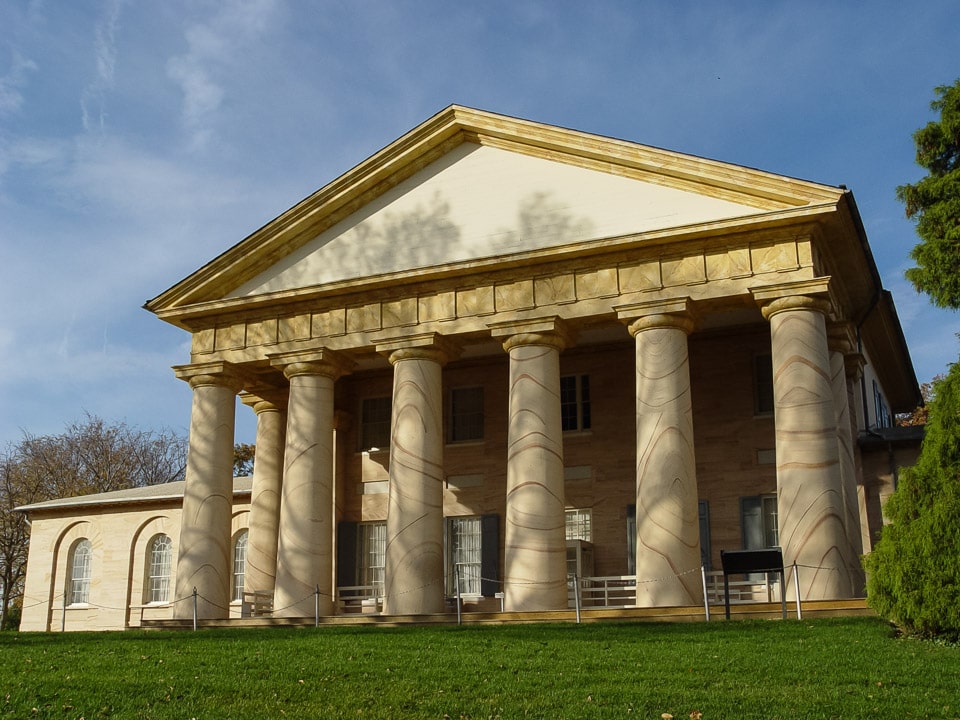
The Tomb of the Unknown Soldier contains unknowns from three wars
The Tomb of the Unknown Soldier in Arlington contains the unidentified remains of one soldier from World War I, World War II, and the Korean War.
An Unknown from the Vietnam War was interred at the monument, but he was later identified and, upon his family’s wishes, buried in another cemetery. The crypt designated for the Vietnam War Unknown remains vacant.
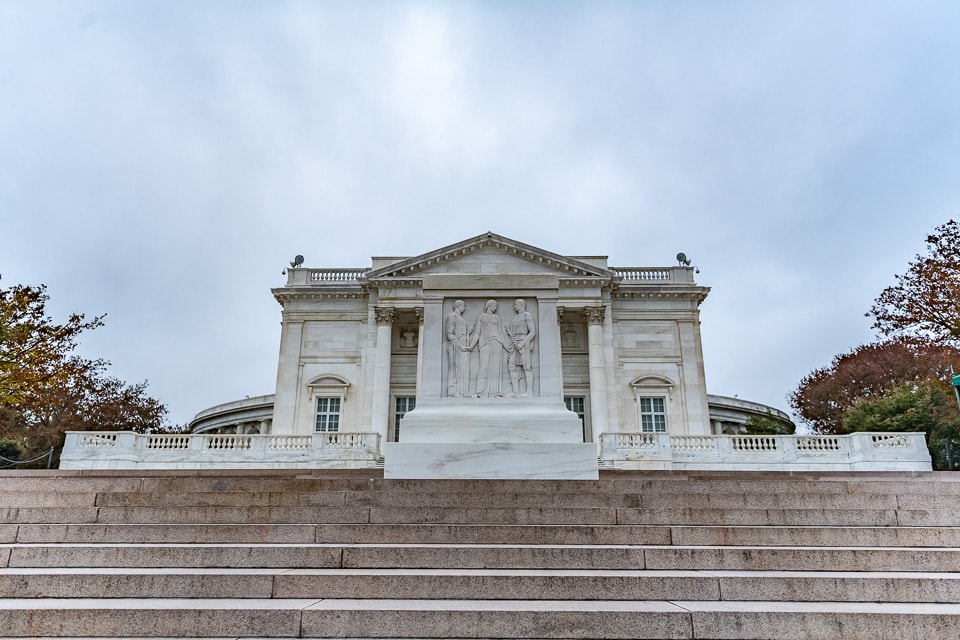
JFK’s grave is the most visited grave in Arlington National Cemetery
The most visited grave in Arlington National Cemetery is that of former president John F. Kennedy.
JFK’s gravesite attracted 16 million visitors in the first three years after his death. During the first year, up to 3,000 people were visiting JFK’s grave per hour (more on weekends). The gravesite still attracts thousands of visitors every day.
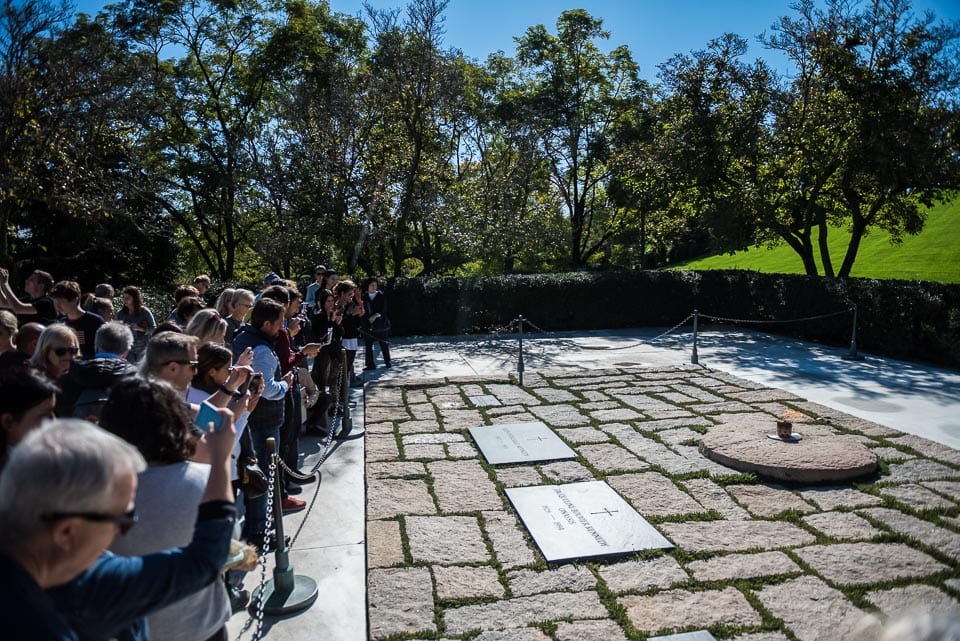
The cemetery has a tombstone designed by Tiffany Studios
The grave of Major Thomas Mayhew Woodruff is marked with a monument designed by Tiffany Studios, a decorative arts company that was known for its stained glass windows and lamps.
On the back of the tombstone is an inscription that reads “Copyright 1901 Tiffany Studios New York”.
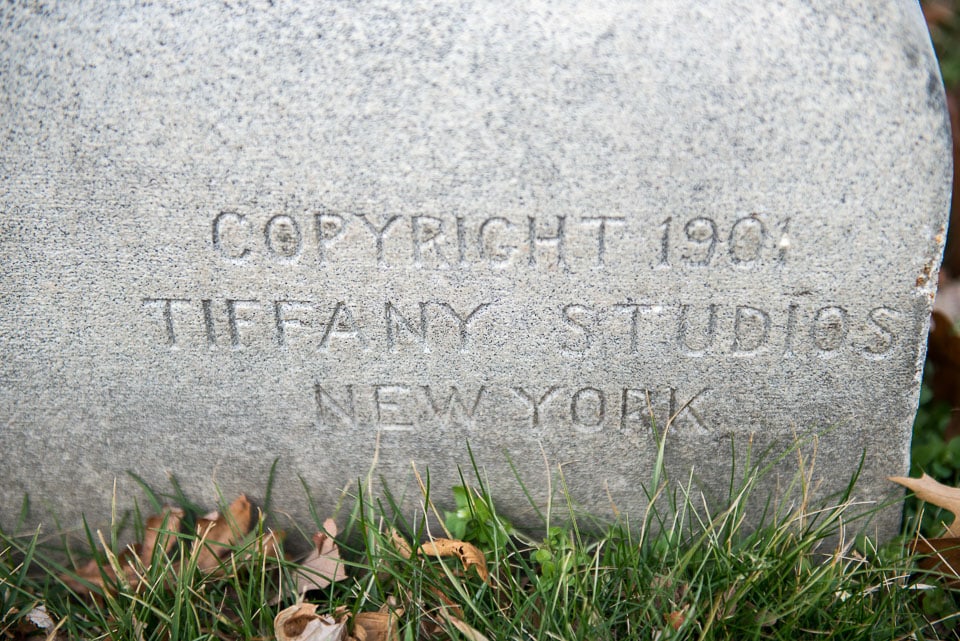
Arlington National Cemetery is over 600 acres
As of early 2020, the grounds of Arlington National Cemetery cover 639 acres. There is a plan to expand the cemetery 37 acres.
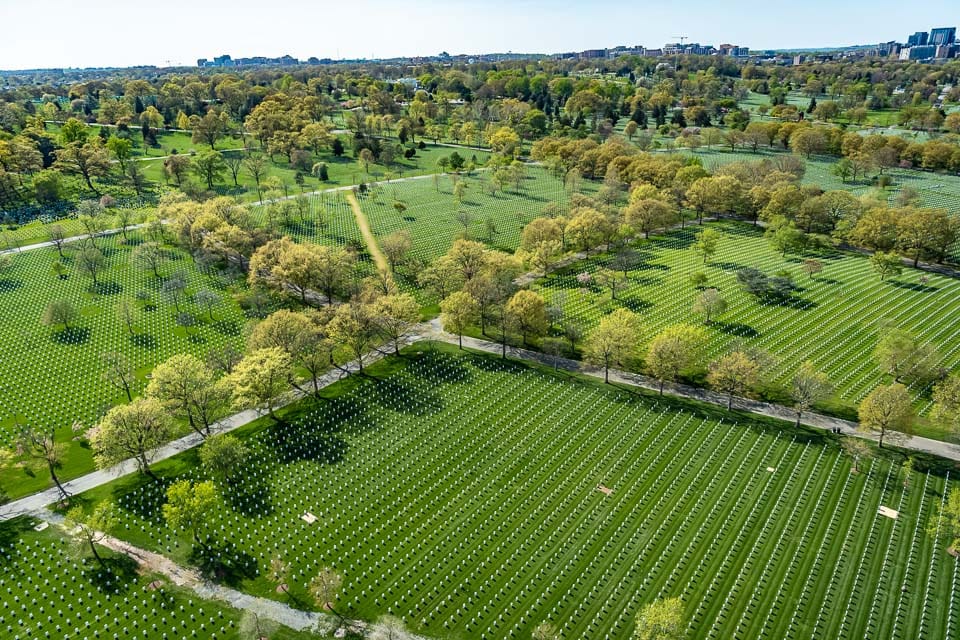
About 150 funerals are conducted at Arlington National Cemetery each week
Funerals at Arlington are conducted six days a week. On average, there are 27-30 funeral services held each weekday and 6-8 on Saturdays.
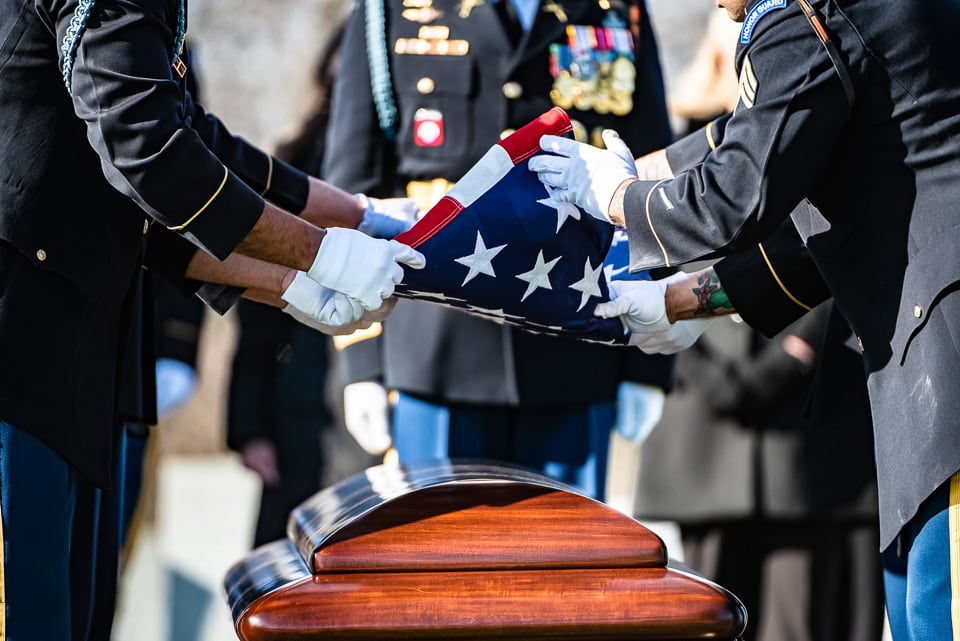
Arlington National Cemetery is running out of space
There are less than 95,000 remaining burial spaces at Arlington National Cemetery. Even with the planned 37 acre expansion, changes to the burial eligibility still need to be made or the cemetery will be full by the mid-2050s.
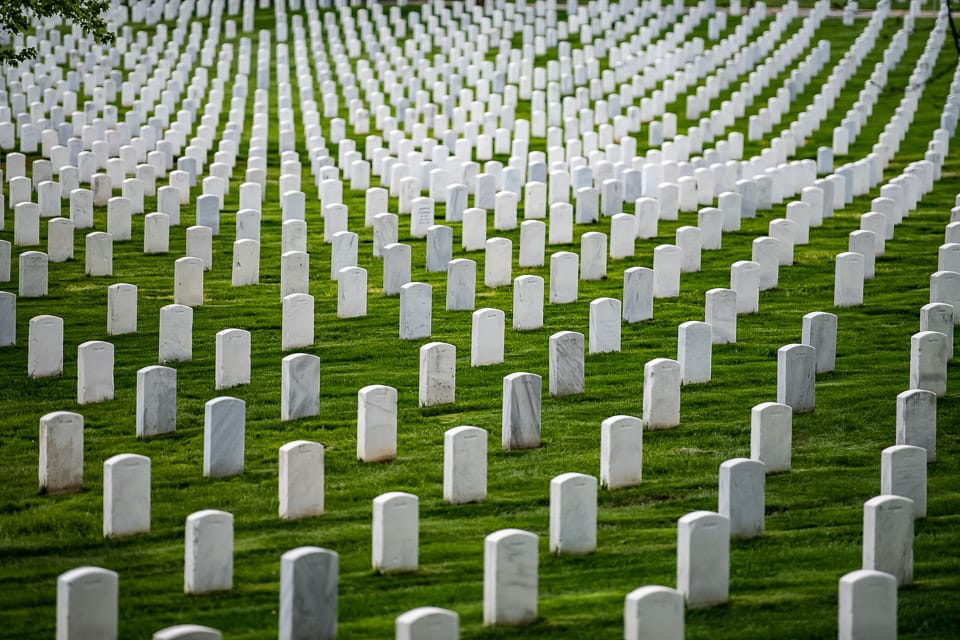
There are over 9,000 trees in the cemetery
Arlington National Cemetery is home to over 9,000 native and exotic trees, including cherry trees that were donated by Japan.
The oldest trees in the cemetery are nearly 250 years old, pre-dating the first burials.
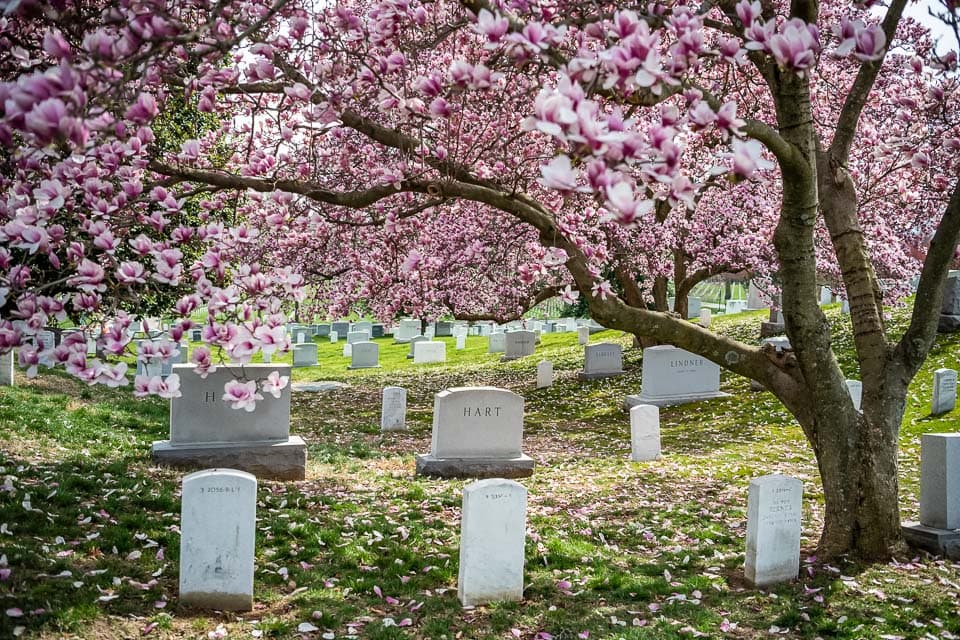
Arlington National Cemetery is an accredited Level III Arboretum
In 2018, the ArbNet Arboretum Accreditation Program designated the cemetery as a Level III Arboretum, a category reserved for gardens with at least 500 species of woody plants.
Only two other cemeteries- Mount Auburn Cemetery in Cambridge, Massachusetts and Spring Grove Cemetery in Cincinnati, Ohio- have been awarded this prestigious accreditation.
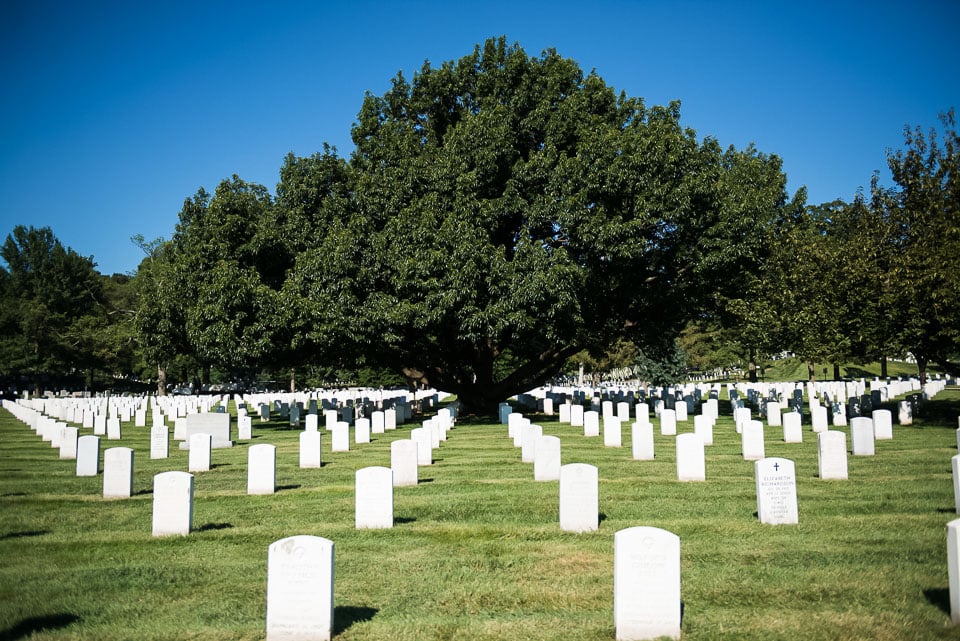
Millions of people visit Arlington National Cemetery each year
More than 3 million people visit Arlington National Cemetery annually, making it the most visited cemetery in the United States.
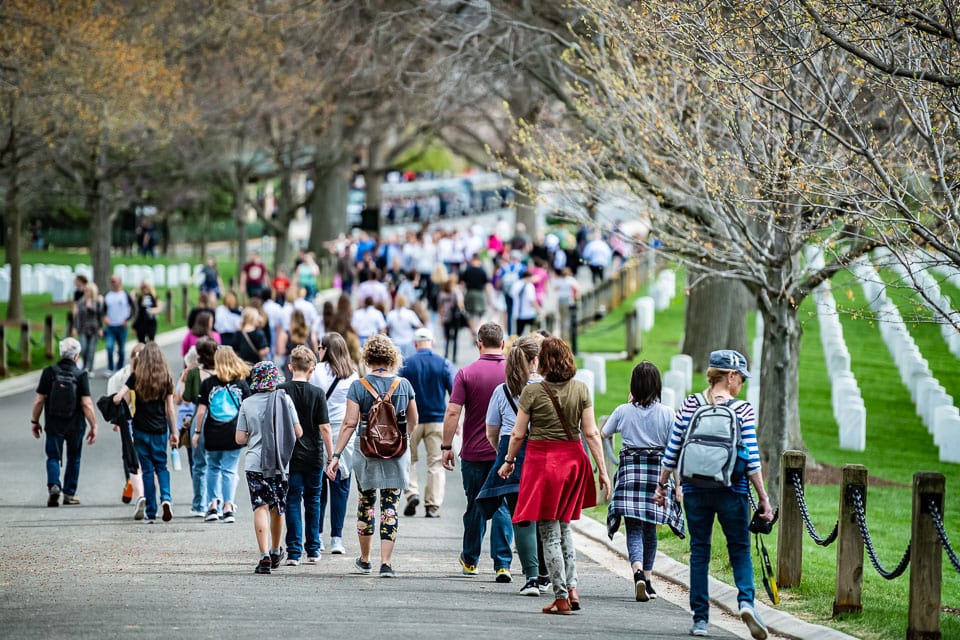
More Burial Places in the United States
- Abraham Lincoln’s Tomb- Guide to Lincoln Tomb State Historic Site
- Granary Burying Ground in Boston- Burial Place of Three Founding Fathers of the U.S.A.
- Charleston Cemeteries- Discover Historic Cemeteries in Charleston
- Magnolia Cemetery- Charleston’s Oldest Public Cemetery
